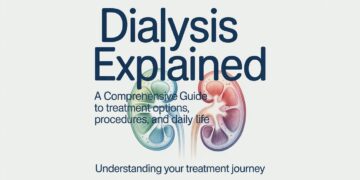CMS uses risk-adjustment models to determine capitated payments made to Medicare Advantage plans. The models use member-documented diagnosis codes to predict a plan enrollee’s future costs to the government.
Experts discussed ways to make the model more accurate and less prone to gaming. Many advocated for leveraging encounter data in addition to or instead of diagnoses from health risk assessments.
How It Works
The Medicare risk adjustment model uses data that healthcare payors collect from members to predict future costs. This information largely comes from diagnosis codes submitted on medical claims to Medicare and used to reimburse providers for services provided to the member. These diagnosis codes are categorized into hierarchal condition categories or HCCs. The HCC values are then used to calculate a patient’s risk score.
The risk scores determine a per-member-per-month (PMPM) capitation payment from CMS to MAOs. This payment is based half on the MAO’s risk adjustment payments and the other half on fee-for-service Medicare payments. To determine a person’s risk score, the MAOs submit data in five fields: date of service from, date of service to, provider type, HCC, and patient identifier. This data can be submitted through paper or electronic claims to the MAO’s billing department, which then forwards it to CMS. Unlike commercial risk adjustment, which largely uses claims submissions for risk-adjustment purposes, the MAO’s risk adjustment models also incorporate encounter and inpatient data. In addition, the MAOs use a separate set of ICD-10-CM diagnosis codes called Z codes to capture socioeconomic factors that may affect health status and are unlikely to be captured by the standard coding system.
HCCs
The foundation for HCCs is the data that physicians document and code on medical claims submitted to payers. The codes provide an overall picture of each patient’s severity and risk for mortality. Physicians need to capture as much of this data as possible so that the HCC value paints a clear picture. Regarding HCC, the more severe the disease, the higher the value and the more money the payer might save.
HCCs are based on the ICD-10-CM diagnosis codes submitted by providers on incoming claims to a payer. The CMS-HCC list contains about 9,500 ICD-10 codes that map to 79 HCC categories. These are grouped into “families,” each family having a specific HCC value; when providers report a single member with two or more HCCs that belong to the same family, only the most severe one is used for calculation.
The resulting risk score is the basis for capitation payments to Medicare Advantage plans and some demonstration projects. It also plays a role in CMS alternative payment models, such as Accountable Care Organizations (ACOs). As healthcare moves away from fee-for-service reimbursement and toward value-based purchasing (VBP), accurate HCC documentation is becoming more critical. This is because it provides the metric for accurate reimbursement.
Demographics
In a risk adjustment model, demographics affect the number and severity of conditions that make up a patient’s risk score. This includes a person’s age, gender, and whether or not they’re dually eligible for Medicare and Medicaid. Demographics also affect how a health plan’s patients are cared for. When a health plan’s members have more chronic and severe illnesses, it drives up their healthcare costs, which in turn causes their risk scores to rise. To prevent this, some states have created a system called the Chronic Illness and Disability Payment System (CDPS) that requires health plans to care for their members according to certain standards. This is done to ensure that the health plans’ contracted providers have enough resources and don’t have incentives to avoid treating sicker and more costly patients.
While the CDPS is designed to prevent plans from taking advantage of their members, it has a few problems that could still hurt healthcare quality. For example, the CDPS uses a system of hierarchical condition category groups wherein each group has a set of criteria and levels that determine the weight of a diagnosis in the overall risk score.
Incentives
Many risk adjustments programs, such as those used in Medicare Advantage and commercial insurance, are built on incentives. These incentives can influence how doctors act, but the evidence shows they don’t necessarily lead to better health outcomes or lower costs. Incentives such as pay-for-performance (P4P) tend to stimulate initial gains but then level off or even reverse over time.
For example, P4P incentive models where hospitals pay doctors bonuses if they reduce hospital admissions or procedures often lead to higher costs and procedures used in the short term. But the underlying issue is not incentives but how well the incentive programs are designed and implemented. In addition, some experts suggest that CMS should focus on improving the accuracy of its risk adjustment model by using more data to determine an enrollee’s health status. One option is to use encounter data, which includes medical records from actual treatment, instead of diagnosis codes submitted for reimbursement.
Read more interesting articles on Tech new master


















